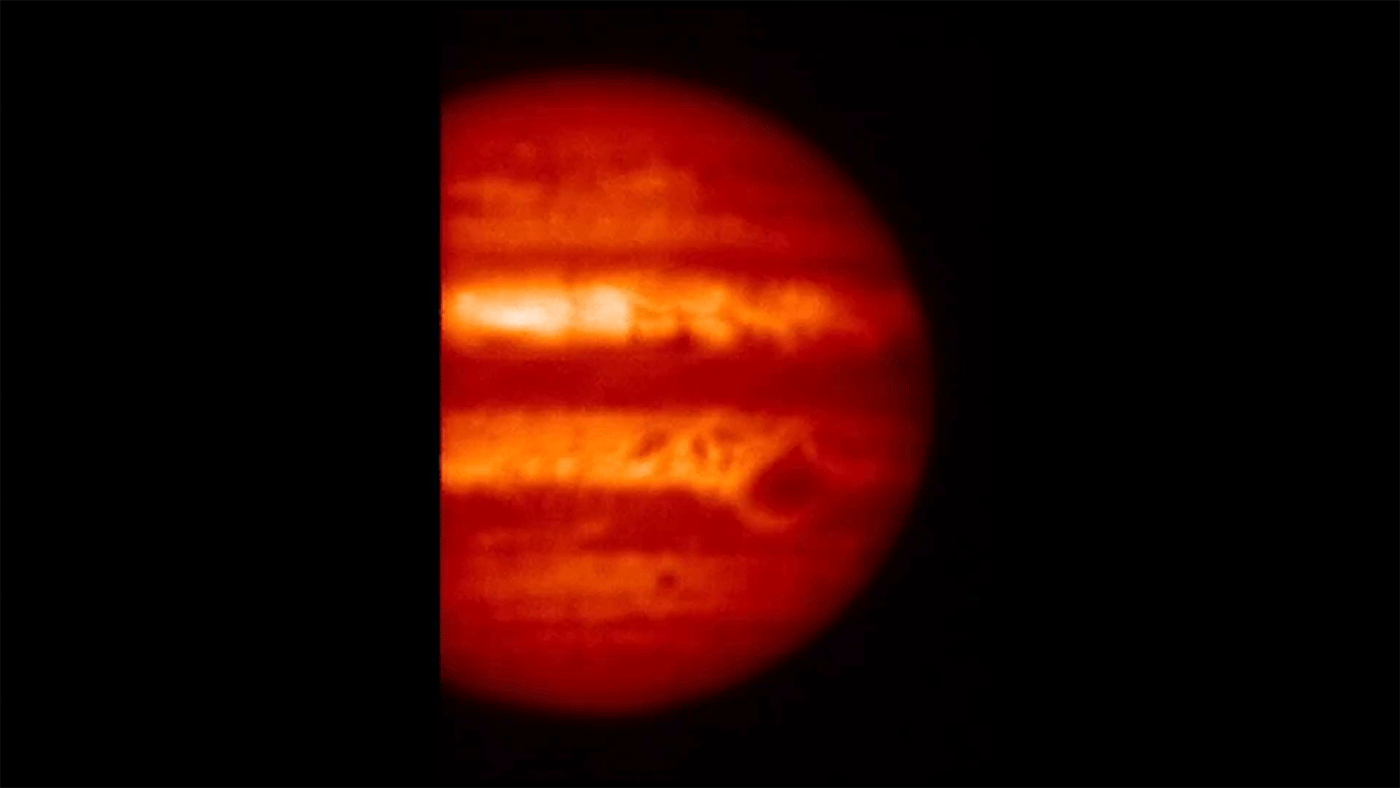
Mid-infrared (8.8 microns) images taken by Subaru Telescope's COMICS (COoled Mid-Infrared Camera / Spectrometer) on May 18, 2017, one day before the Juno spacecraft's 6th close approach. It is sensitive to Jupiter's tropospheric temperatures and the thickness of a cloud near the condensation level of ammonia gas. This image covers the detailed structure of the Great Red Spot and its surroundings that the Juno will encounter on its 7th closest approach to Jupiter on July 11, 2017. (Credit: NAOJ and NASA/JPL)
A joint team led by researchers at NASA/JPL and Tohoku University has revealed images of Jupiter's atmosphere in mid infrared, taken by the Subaru 8-m telescope in January and May, 2017. This was done in association with the NASA Juno mission which flew over Jupiter's Great Red Spot for the first time on the morning of July 11, Japan time.
The Juno spacecraft, which was launched in July 2011, does not have on board, a mid-infrared instrument which is sensitive to the upper troposphere and stratosphere of Jupiter. This range is therefore covered by the ground-based observatories.
Juno senses the deep atmosphere 1~100 atm below the cloud (by microwave) and the upper aurora region with the latitude of > ~500 km from the thermosphere (by UV and near infrared). The mid-infrared data from the Subaru telescope is the key to connecting both these regions, leading to the creation of the first 3-D view of the Jovian atmosphere.
Observations by the Subaru Telescope were made by COMICS (COoled Mid-Infrared Camera / Spectrometer) on January 11-15 and May 16-19, 2017. The Subaru observations provide the highest spatial resolution of Jupiter's thermal output due to the 8-meter size of its primary mirror. For the images of Jupiter's Great Red Spot in May 2017, COMICS was able to capture features which were close to the 1,000-km resolution of Juno's microwave experiment.
The Subaru telescope also provided the highest spatial resolution of heating in Jupiter's stratosphere from auroral-related processes. This heating will be studied and compared with auroral phenomena in the ultraviolet and near-infrared observed by Juno and other ground-based facilities. These include the Hubble Space Telescope, the JAXA Hisaki UV/EUV space telescope and Tohoku University's Haleakala telescope.
This joint team included Tohoku University's Hajime Kita and Yasumasa Kasaba (PI on Jan 11-12 and May 18-19). Both will also be involved in the European Jupiter mission, JUICE, which is planned for 2022. The university will contribute to the JUICE mission through the hardware procurement of the radio wave instrument (RPWI) and the scientific contributions to sub-mm wave observations (SWI).
Contact:
Yasumasa KasabaDepartment of Geophysics,
Tohoku University
Email:kasaba@pat.gp.tohoku.ac.jp
